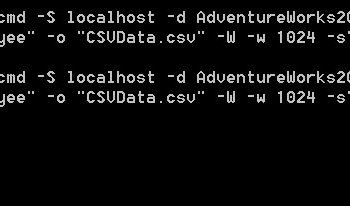Applying a patch is something which is part of everyone’s life in the software industry. One of my clients reported below error related to Patch Installation Error.
The version of SQL Server instance <InstanceName> does not match the version expected by the SQL Server update. The installed SQL Server product version is 11.1.3000.0, and the expected SQL Server version is 11.3.6020.0″
They said that they are not able to move ahead of below the screen.

Here is the text of the message which is shown at the bottom of the screen: There are no SQL Server instances or shared features that can be updated on this computer.
I considered support articles and found that 11.1.3000 is service pack 1 and 11.3.6020 is service pack 3. When I asked about the patch, they told that it is CU2 for SP3.
I told them that to apply any CU of service pack, we first need to apply the base service pack. Once the installed SP3, then they could install CU.
SOLUTION/WORKAROUND
There could be two reasons of such error:
- Version of CU is not matching with the base service pack. Like the one which happened above.
- Same error can also appear if last patch was incorrectly installed. If that is the case, you can try to repair the instance and then retry the patch.
Reference: Pinal Dave (https://blog.sqlauthority.com)






9 Comments. Leave new
Thank you very much. It was very useful information for us as we had the same issue.
–Naveen & Varun
Your welcome!
Pinal – You are awesome again as usual!
This is new learning for me today:
“I told them that to apply any CU of service pack, we first need to apply the base service pack. Once the installed SP3, then they could install CU”
JFYI, I was installing SQL 2016 SP1 CU3 directly after upgrading to SQL 2016 from SQL 2014. It threw a similar version mismatch exception. So, I went ahead downloaded/installed base patch i.e. SP1 then SP1 CU3. That worked!
There are probably services that require previous service pack. Try installing the service pack without cumulative and most likely actuaice the elements that are needed.
Thanks… my issue was also that the base SP wasn’t installed. When you consider all the code that must be in there for running the update… a simple check and a message “You must first install Service Pack X” would be a nice and simple check :)
I have a situation where I am attempting to install a subsequent CU within the same SP level, and I am getting the message “There are no SQL Server instances or shared features that can be updated on this computer.”. Current plan is to uninstall the last patch then installing the one I want to update to (all within the same SP). Would you recommend that, or, would you attempt to use the repair option within the SQL installation media, then proceed?
Same msg but diff issue.
server had ssas & three sql instances. Later found from an admin that they uninstalled SSAs & reinstalled it as RTM.. yet the three sql instances were at sp2+cu8.
SQL doesn’t like to patch default sql instance from sp2cut to cu12… when ssas is at rtm.
had to run sp2 & cu8.. then was able to apply cu12.
… so maybe update your solution with ‘there could be 3 possible reasons’…
#3: check for other sql components (ie: ssas) with same instance name as the instance you are having issues patching. Apply the missing patches to the other